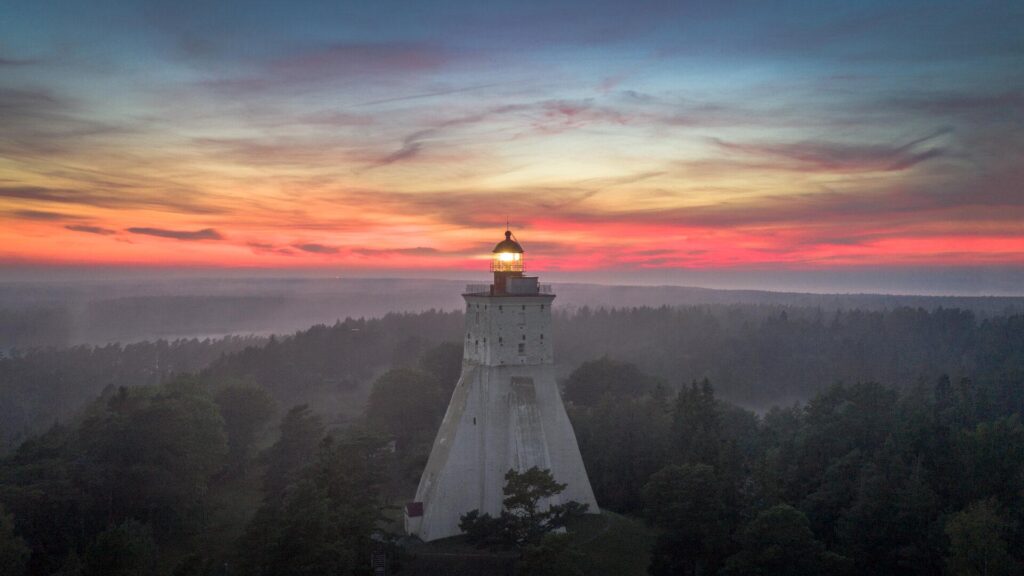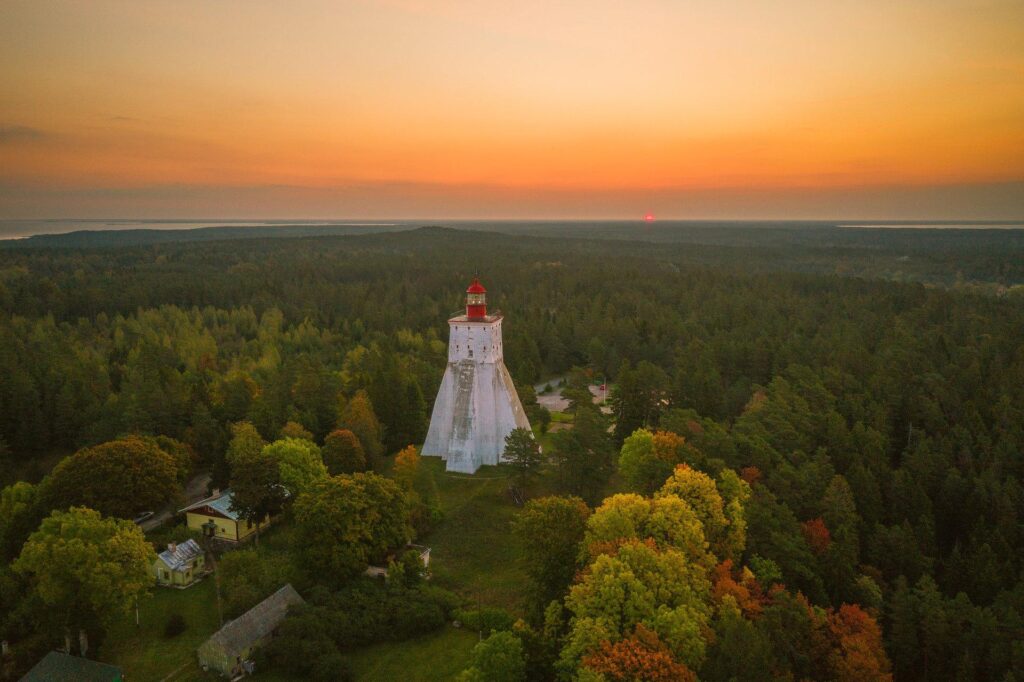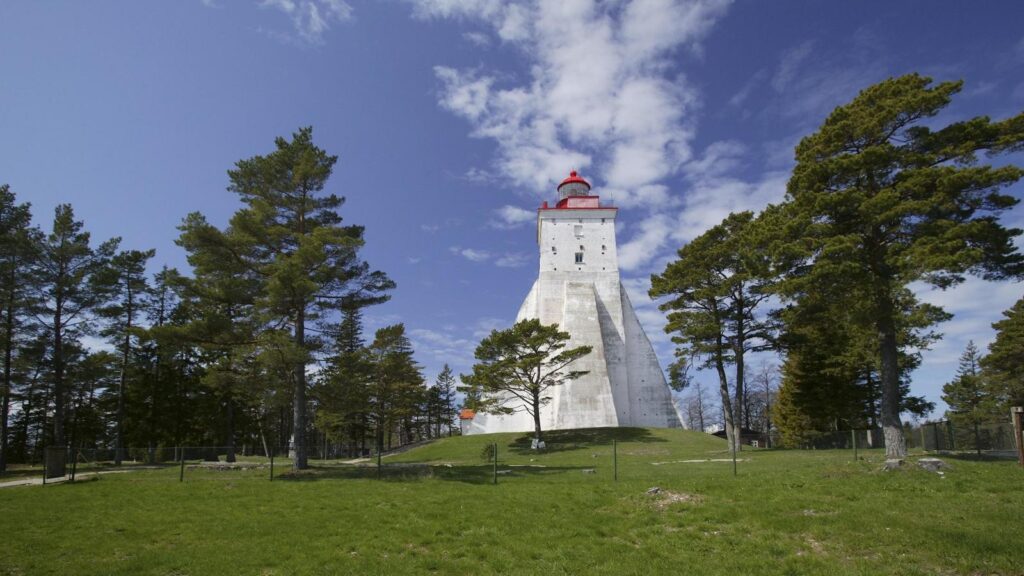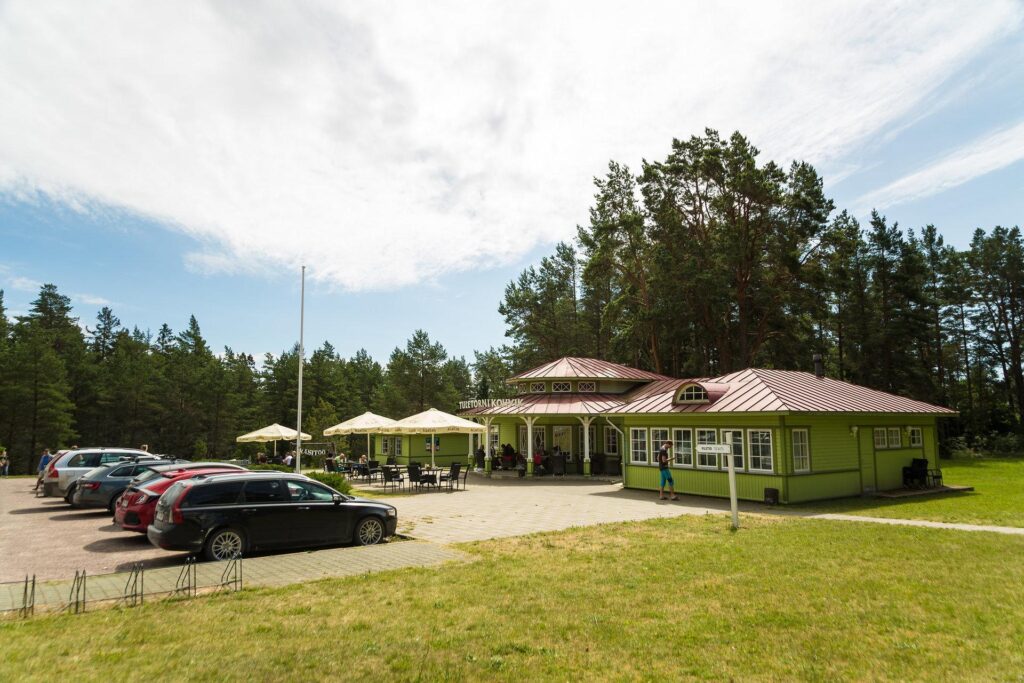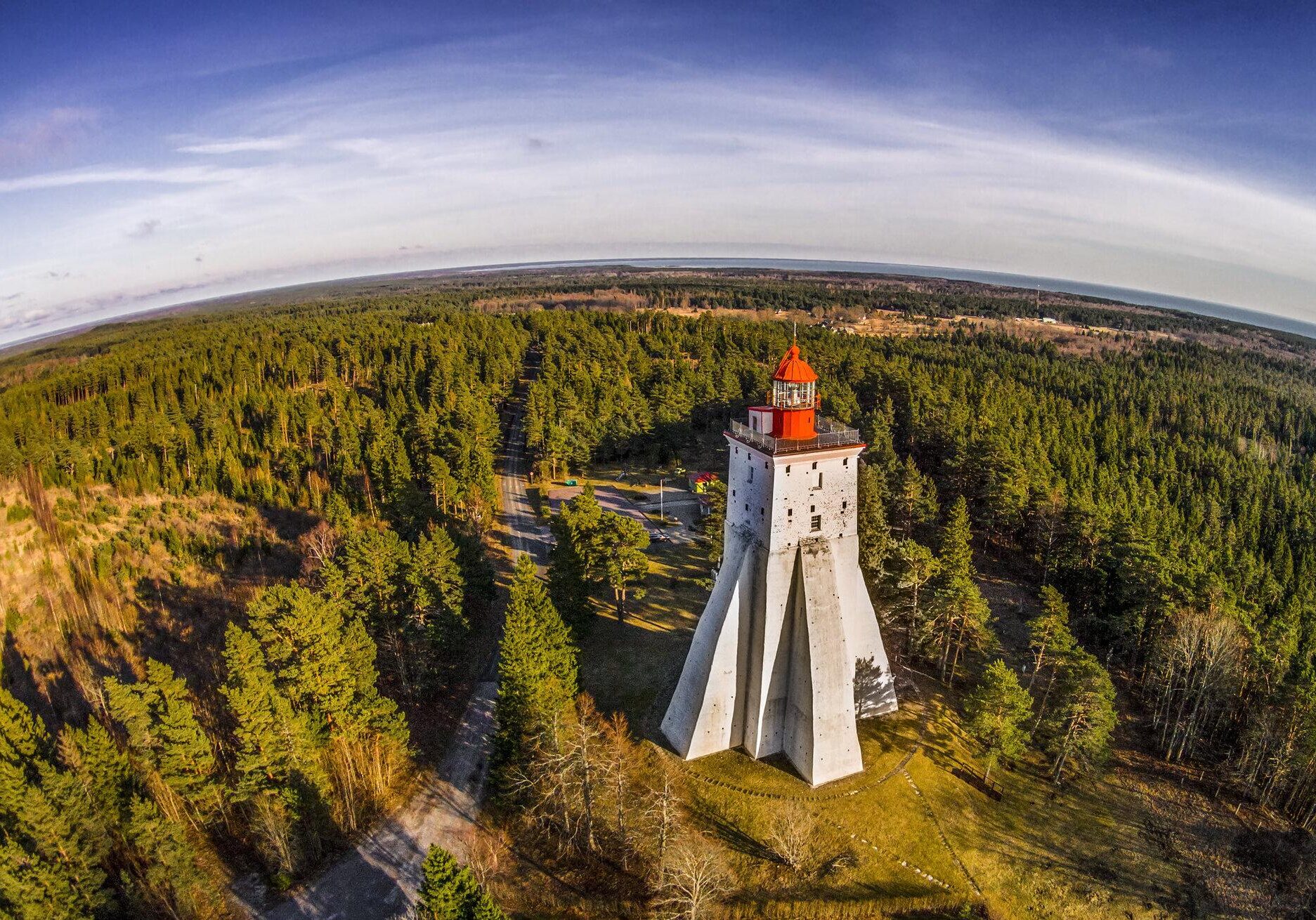
The history of the oldest lighthouse not only in Estonia, but anywhere in the Baltic States and indeed on the Baltic Sea, stretches back 500 years, when landmarks were needed to guide ships in the Hanseatic League. The most important east-west trade route in Northern Europe passed the island of Hiiumaa and merchants complained of ships being lost on the Baltic Sea. This led to the construction of the lighthouse at Kõpu to warn ships of the low waters off the island.
The lighthouse was built at 67 metres above sea level at the highest point on Hiiumaa. It stands 36 metres above the ground, meaning its light shines out at 102.6 metres above sea level. No other lighthouses by the Baltic Sea are as high.
A very important shipping lane of the Baltic Sea passed the western coast of Hiiumaa many centuries ago already. It was threatened by the very dangerous Hiiu madal or Suurrahu (shallow reef) that had grounded many ships. The Hanseatic Merchants League was very interested in marking this highly dangerous place somehow so that the safety of passing ships would be guaranteed. In 1500 the Tallinn’s magistrate succeeded to get permission from Bishop John III Orges to build a landmark here. The highest peak of the Kõpu Peninsula (and the whole Western Estonia) – 68 metres above sea level was chosen to be the location of the landmark. Later this place was called “Tornimäe” -(Tower Mountain). The construction work was stopped for many years because of the plague. It is not known when the first tower was finished, but at least in 1531 it was there. In those times the mark was ac- tually a beacon lightless landmark – because they didn’t make fire at night. The 8 metres wide and 20 metres high tower had to be seen at least at the range of 20 kilometres in the daytime. The big mea- surements of the tower were followed by the fact that the binocular was not invented yet.
Old Kõpu beacon was rebuilt as a lighthouse only by the fall of 1649. The fire was on the top of the tower at the open iron grate. Wood was hauled up the sloping sides with ropes. The fireguards climbed up on the wooden stairs which were on the outside part of the tower. During the 180 day long period when it was necessary to make fire, approximately 1000 fathom of wood was burned. From 1805 they started to use hempen oil.
The lighthouse was administered by the state in 1810 and then followed by a number of reconstructions. From the bottom part stairs with 69 steps to the top part were cut. Two rooms were built on top of each other and on top of them was built a new room for lamps.
They started to use petroleum to light the tower in 1854. The mirror system was changed to Fresnel dioptrical prism and petroleum incandescent lamps in 1860. In 1900 a machine room with rotating optics from the Paris World Exhibition was purchased. During World War II the lighthouse was damaged. It was restored after the war – first as a blinking light and then later rotating. In 1963 the gaslight was changed to electricity. The present system has worked since 1981. At the end of 1980-ies a very strong concrete “shirt” was put around the tower to strengthen the building.
Nowadays the height of the lighthouse is 37 metres. The tower’s lantern room height is 102 metres from the sea level. If the weather is clear it is seen almost as far as 50 km. Kõpu lighthouse is the third oldest working lighth.
Gallery
It is a waypoint on the journey
You might also be interested in:

